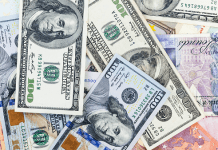- Indian Rupee (INR) is falling after losses last week
- Manufacturing PMI eased to 57.9
- US Dollar (USD) falls against major peers
- Volumes are low due to Labour Day holiday
The US Dollar Indian Rupee (USD/INR) exchange rate is rising after gains last week. The pair rose +0.08% in the previous week, settling on Friday at 84.03. At 19:00 UTC, USD/INR trades +0.02% at 83.95 and trades in a range of 83.87 to 84.04.
The Indian rupee is edging lower following data showing that India’s manufacturing growth eased to a three-month low in August as demand weakened significantly.
The HSBC India manufacturing PMI compiled by S&P Global fell for a second straight month in August, dropping to 57.5, down from 58.1, falling below the preliminary estimates of 57.9. Despite the decline, the index remained above the 50 level that separates expansion from contraction, where it has been since July 2021.
Output and new orders, which are both considered to be gauges for demand, slipped to a seven-month low, and international demand grew at its slowest pace since January. Meanwhile, the data also showed that output price inflation was close to July’s almost 11-year high.
The US Dollar is rising against the Rupee but falling against major peers. The US Dollar Index, which measures the greenback versus a basket of major currencies, trades at -0.06% at the time of writing at 101.67, after gains yesterday.
The U.S. dollar is inching lower on Monday but remains within striking distance of its two-week high reached last week as investors turn their attention to the US jobs report due on Friday.
Trading volumes are light on Monday owing to the Labour Day bank holiday, but things will likely pick up as the week moves on and we head toward the non-farm payroll report that’s on Friday.
Friday’s jobs report is being seen as crucial after Federal Reserve chair Jerome Powell said the central bank is shifting its gaze away from inflation and instead highlighted the risks of the jobs market.
Friday’s jobs figures will determine the magnitude of the Fed’s expected rate cut in September and could either refute or confirm fears of a recession in the US.
.





